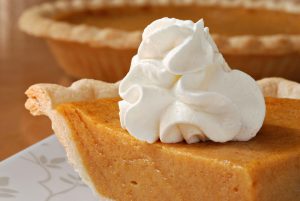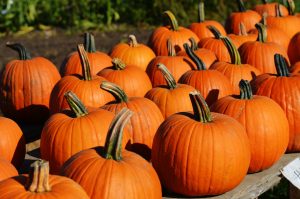Since its growth starts from a flower, the pumpkin is scientifically considered a fruit, offering seeds and flesh that are edible and rich in vitamins. Whether it’s the pumpkin spice you use around Thanksgiving that doesn’t actually have pumpkin ingredients included (it’s more like a blend of cinnamon, ginger, nutmeg, and allspice) or a beverage from Starbucks where in 2015 they added pumpkin puree to make the seasonal drink a little more “natural,” the industry is seeing quite a demand.
Illinois reigns supreme as the top producer of pumpkins in the nation. According to the U.S. Department of Agriculture, the state produced a whopping 652 million pounds of them in the past year on nearly 16,000 acres! Smaller, denser, and sweeter varieties of pumpkins are better to eat, but all seeds can be enjoyable. While there are about 150 pumpkin varieties worldwide, on average, Illinois grows predominately pie varieties for processing into products at approximately 40,000 pounds per acre.

Forty percent of the nation’s pumpkins come from six states (in order of 2021 production): Illinois, California, Indiana, Texas, Virginia, and Michigan. Although each year’s harvest can certainly be impacted based on where you live. Especially due to drought conditions, pumpkins in areas such as Texas may be smaller or picked over a little quicker, for example.
Be on the watch for your perfect pumpkin, and maybe take a stab at what fun products you can create with the pumpkin you carve this fall season.
And when you carve, what is your favorite way to enjoy pumpkin? They’re very nutritious both for seeds and outside layer, with the fruit’s flesh being high in fiber and beta carotene, along with toasted or baked seeds being rich in potassium and protein. Many recipes to create a pumpkin pie (based on the ingredients of a 1675 British recipe) have called for cinnamon, nutmeg, cloves, and pepper. The spice blend became associated with pumpkin spice since it’s closely associated with pumpkin. Similarly, the Starbucks Pumpkin Spice Sauce includes mostly sugar, condensed milk, and pumpkin puree.
Society is good at taking a healthy plant and making it a high-calorie cup of deliciousness! Ha.

And even as we know that the basic composition of pumpkins are nutritious for human consumption, it’s important to recognize that it’s great for animals, too. Pumpkins can be a great source of feed for cattle during fall, especially when the quality of grass turns the other way. Research even shows the seeds can be a natural dewormer in livestock due to the chemical “cucurbitacin.” The fruit can also improve digestion and consumption in the cattle’s stomach! It can also be fed in the poultry industry, helping with the preceding mineral caveats. This may also curb greenhouse gas emissions to feed leftover pumpkins to animals, rather than being thrown in to landfills! Agriculture is pretty good at recycling everything after all.
Yet for all the nutritional benefits we can glean from pumpkins, they are far and away best known for their contribution to the festiveness of the Halloween season, and autumn in general. They are common as decoration, and there’s a sense of pride in growing some pretty large pumpkins — so much so that there are record books for size. Currently, the world record is held in Italy by Stefano Cutrupi with his 2,702.9-pound pumpkin — and he did it using this approach. There is a community for this kind of thing at bigpumpkins.com.
Organizations nationwide even host contests, but note that oftentimes, the pumpkins must be free of rot and free of holes or cracks in the interior cavity of the fruit, in case you want to enter yours. If you didn’t know, there are memberships to these organizations made of growing events, weigh-offs, meetings, presentations, and educational seminars.
Michelle Miller, the “Farm Babe,” is an internationally recognized keynote speaker, writer, and social media influencer and travels full time to advocate for agriculture. She comes from an Iowa-based row crop and livestock farming background and now resides on a timber farm in North Central Florida.



